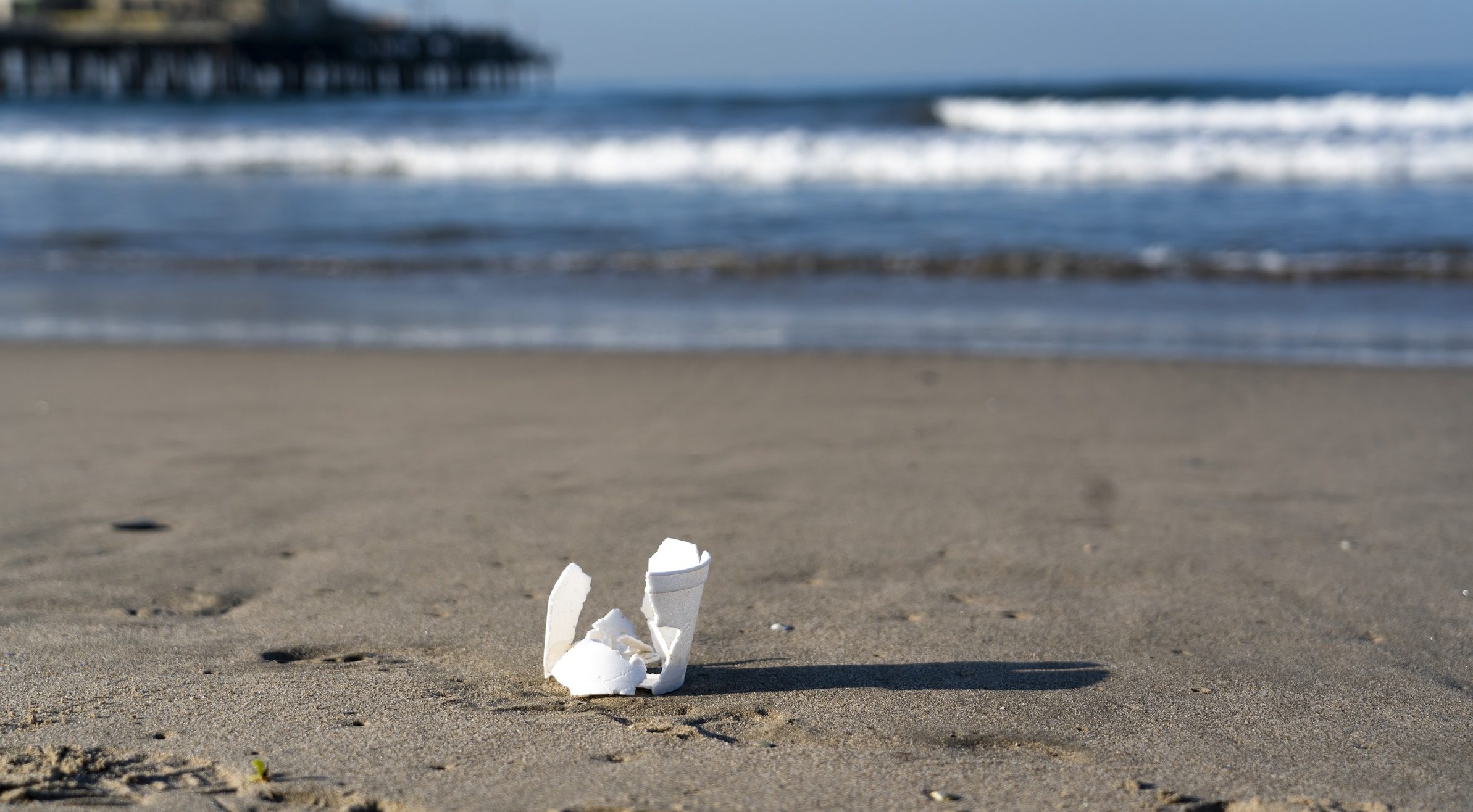“This stuff is a nightmare, and it’s everywhere”: Ocean Conservancy Launches “What The Foam” Campaign Ahead of 38th International Coastal Cleanup
New data estimates more than 2.4 billion pieces of plastic foam foodware contaminate American recycling systems each year

WASHINGTON, D.C. – Today, Ocean Conservancy released a new report revealing a plastic foam fiasco: plastic foam takeout containers – often colloquially referred to by the brand name “Styrofoam” – were the seventh most common item collected by International Coastal Cleanup volunteers in 2022, the highest this item has ranked since it was first tracked as a standalone category 10 years ago. And according to new Ocean Conservancy surveys, more than half of all Americans regularly attempt to recycle this non-recyclable plastic.
The report marks the launch of a new campaign calling on the U.S. to say, “What The Foam,” and ban plastic foam foodware nationally; and corresponds with the official kick-off of Ocean Conservancy’s 38th International Coastal Cleanup, which begins in September and mobilizes hundreds of thousands of people to collect trash and data from beaches and waterways around the world.
“Anyone who has ever encountered plastic foam at the beach or even at home knows that this stuff is a nightmare, and it’s everywhere,” said Nick Mallos, Vice President of Ocean Plastics at Ocean Conservancy. “Single-use plastic foam foodware is some of the most common trash on our beaches and in waterways; and tiny plastic foam pieces are even more inescapable. It’s obvious that we don’t need plastic foam foodware – that’s why it’s already been banned in 10 states and many countries. It’s time for the U.S. to follow suit: Ocean Conservancy is urging Americans to say, ‘What The Foam’ to Congress, and help us eliminate this material for good.”
Key findings in the report include:
- Plastic foam foodware – including cups, plates, and takeout containers – are among the most common types of plastic littering our beaches. Since 1986, International Coastal Cleanup volunteers have collected 8,709,519 of these items globally. Smaller foam pieces are even more common: since 2013, Ocean Conservancy has tracked the types of “tiny trash” items volunteers collect from beaches and waterways, and in that time, 29,082,728 foam pieces have been recorded globally.
- Ocean Conservancy and University of Toronto Trash Team’s International Trash Trap Network – which was founded in 2021 and is a consortium of trash capture devices operating in rivers and other inland bodies of water – also records data on “tiny trash.” For two years running, foam pieces have been the top tiny trash item collected, with 49,801 pieces recorded in 2022.
- Despite state and local level bans, plastic foam is widely used: 83% of Americans reported receiving some plastic foam foodware with their takeout/food delivery in the last two weeks. Of that, approximately 31% reported receiving foam in all or most of their takeout orders.
- Using 2021 Ocean Conservancy survey results showing that 22% of all takeout and food delivery orders contain plastic foam foodware, Ocean Conservancy estimates that at least 5.6 billion pieces of plastic foam are used by Americans each year.
- Confusion over the recyclability of plastic foam is common. More than half of Americans reported putting plastic foam in their recycling bin in the last two weeks; and 35% reported that they always attempted to recycle foam, totaling to roughly 2.5 billion pieces of foam foodware contaminating recycling systems each year.
- There are high levels of concern about plastic foam’s impact on humans and wildlife. 76% of Americans reported feeling concerned about plastic foam containing harmful chemicals, and over half of Americans reported feeling very concerned about animals and wildlife ingesting microplastic foam pieces.
- Americans are hungry for solutions. More than 70% of Americans across party lines would support a national phase out of plastic foam; and nearly 70% of Americans would be willing to consider participating in a reusable foodware program if restaurants offered
“The best-case disposal option for plastic foam foodware is, unfortunately, landfills,” said Allison Schutes, Director of the International Coastal Cleanup at Ocean Conservancy. “And we see the worst-case scenarios all too often: plastic foam contaminating the recycling stream, getting incinerated, or ending up in the environment, where it can be ingested by wildlife – in fact, just last week, one of my daughters dug up a plastic foam cup on a beach, right next to a sea turtle’s nest.”
“It’s time to say farewell to foam once and for all,” said Dr. Anja Brandon, Associate Director of U.S. Plastics Policy at Ocean Conservancy. “At the same time, we need to make sure we’re not just replacing these materials with other non-recyclable single-use plastic items. Banning plastic foam is a great first step, but it must be coupled with investments in reusable programs, as well as upstream redesign standards to ensure that all the products and packaging we use are actually reusable or recyclable.”
In 2022, nearly 470,000 volunteers worldwide collected over 8 million pounds of trash across 15,508 miles of coastline. The top items found globally were cigarette butts (1,860,651 collected), plastic beverage bottles (1,175,045 collected) and plastic food wrappers (998,661 collected). This year’s International Coastal Cleanup will take place throughout the month of September. Visit SignupToCleanup.org for more information.
###
Experts are available for interviews upon request. A media kit with photos, b-roll, and a downloadable version of the report can be found here. The 2022 International Coastal Cleanup data report can be found here.
ABOUT OCEAN CONSERVANCY
Ocean Conservancy is working to protect the ocean from today’s greatest global challenges. Together with our partners, we create evidence-based solutions for a healthy ocean and the wildlife and communities that depend on it. For more information, visit oceanconservancy.org, or follow us on Facebook, Twitter or Instagram.
Media Contact